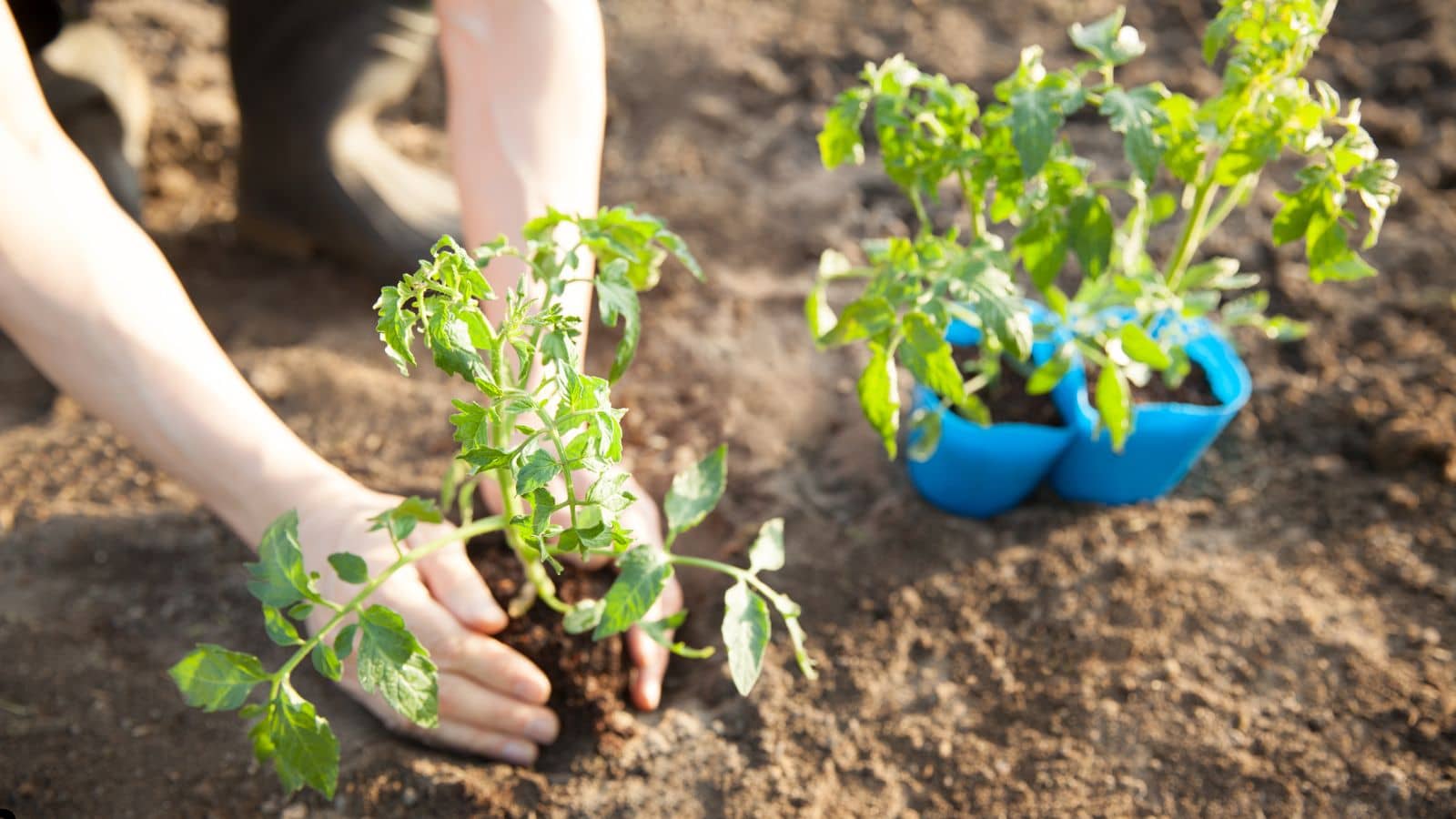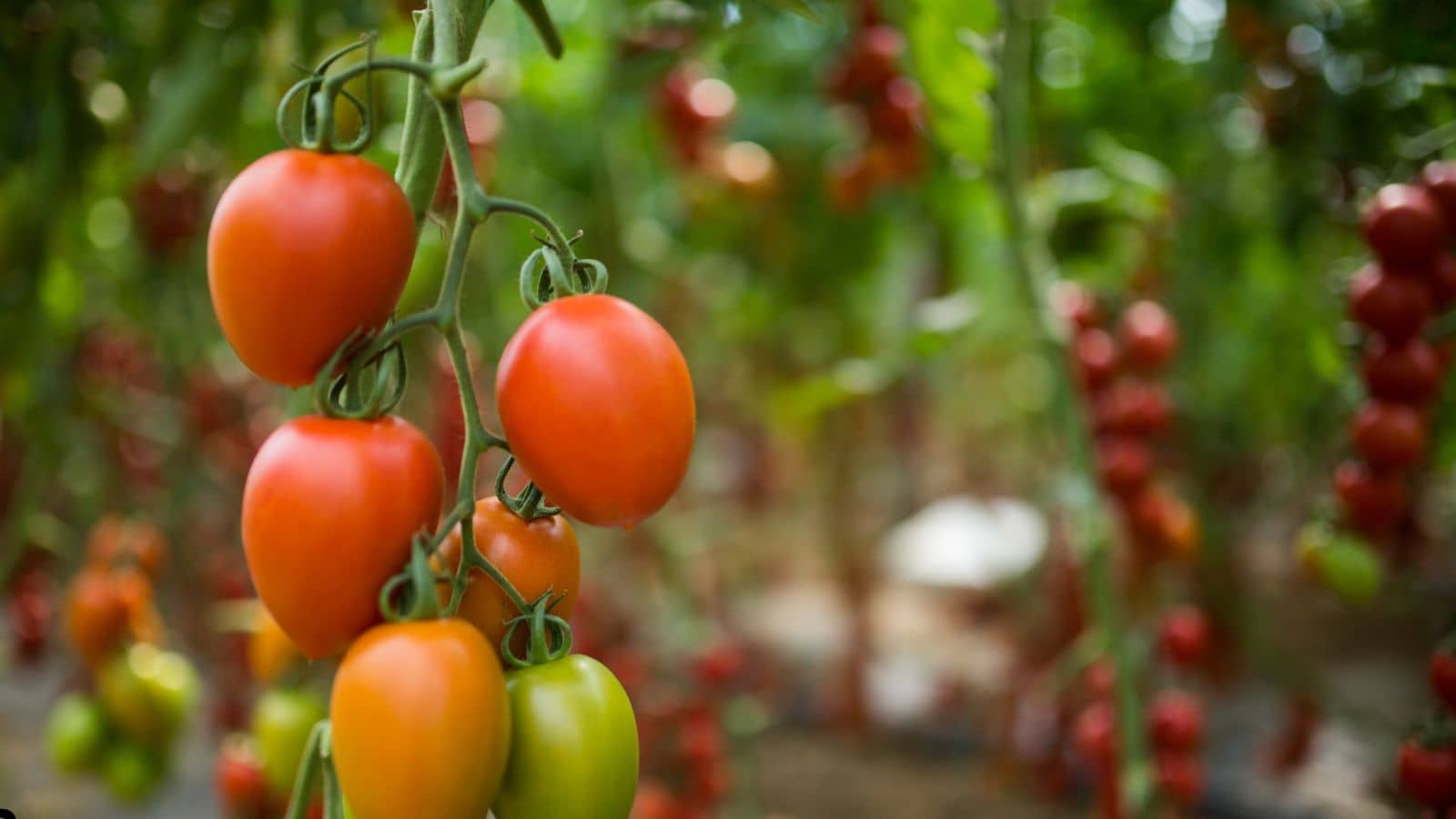Tomato Companion Planting: Best Plants to Grow with Tomatoes (And What to Avoid)

Tomatoes are garden rockstars—versatile, productive, and deeply rewarding. But even tomatoes need good neighbors. That’s where companion planting comes in.
If you’re looking to improve your tomato yield, reduce pests naturally, and make the most of your garden space, companion planting is one of the best organic techniques out there. Let’s dig into which plants play nice with tomatoes—and which ones don’t.
Want to increase your tomato yields? Check out how this amazing Gardening App can help and start for free.
Chapters
- Tomato Companion Planting [Video Tutorial]
- What Is Companion Planting?
- Best Companion Plants for Tomatoes
- Plants to Avoid Near Tomatoes
- Companion Planting Layout Ideas for Tomatoes
- Organic Pest Control Benefits
- Common Tomato Pests & Natural Repellents
- Companion Planting Mistakes to Avoid
- Final Thoughts: Grow Healthier Tomatoes with the Right Companions
- FAQ Section
Tomato Companion Planting [Video Tutorial]
What Is Companion Planting?
Companion planting is the practice of growing certain plants together to boost growth, deter pests, attract pollinators, or improve soil health. It’s like gardening with a buddy system—plants that complement each other help create a thriving, balanced ecosystem.
In the case of tomatoes, certain companions can:
- Repel harmful insects (like hornworms and aphids)
- Enhance flavor
- Provide shade or support
- Improve soil nutrients
Best Companion Plants for Tomatoes

1. Basil
Why it works: Basil repels common tomato pests like whiteflies, aphids, and hornworms. Gardeners also swear it improves tomato flavor.
Bonus: They both love the sun and similar watering schedules.
2. Marigolds
Why it works: These colorful flowers repel nematodes and deter aphids and other insects. They’re a popular choice for organic pest control.
Tip: Choose French marigolds—they’re especially effective for pest control.
3. Chives & Onions
Why it works: The strong scent of alliums (onions, chives, garlic) confuses and repels pests like spider mites and aphids.
Planting tip: Don’t plant them too close—give your tomatoes space to breathe.
4. Carrots
Why it works: Carrots can be tucked beneath tomatoes without competing for above-ground space. They help break up compact soil, improving drainage.
Caution: Tomato foliage can sometimes stunt carrot growth, so expect smaller carrots.
5. Borage
Why it works: Borage deters tomato hornworms and attracts bees for better pollination. It’s also said to improve tomato health and flavor.
Bonus: It’s a beautiful, edible herb with cucumber-like flowers.
6. Lettuce & Spinach
Why it works: These leafy greens love the cooler, shady spots under tomato plants. They don’t compete for nutrients and help suppress weeds.
Plants to Avoid Near Tomatoes

Just like some neighbors are great, and others not so much—certain plants can harm your tomatoes. Here’s what to avoid:
1. Corn
Why it’s bad: Attracts tomato pests like the corn earworm (also known as the tomato fruitworm). It’s a double whammy for pest issues.
2. Cabbage Family (Brassicas)
Includes: Broccoli, cabbage, cauliflower, kale, Brussels sprouts
Why it’s bad: Competes heavily for nutrients and may stunt tomato growth.
3. Potatoes
Why it’s bad: Being in the same plant family (nightshades), potatoes and tomatoes are vulnerable to similar fungal diseases like blight.
Pro tip: Rotate these crops yearly to prevent disease buildup in the soil.
4. Fennel
Why it’s bad: Fennel can inhibit the growth of many garden plants, including tomatoes, due to its allelopathic properties (it releases chemicals into the soil).
Companion Planting Layout Ideas for Tomatoes
You don’t need a giant garden to make companion planting work. Try these simple layout ideas:
Raised Bed Layout
- Center: Tomato plants
- Border: Marigolds
- Understory: Basil or lettuce between tomato bases
Container Garden Setup
- Tomato in large pot with a smaller pot of basil or chives nearby
- Marigolds placed strategically around containers to ward off pests
Vertical Garden
- Train tomatoes up a trellis
- Use the shaded soil below for spinach or arugula
- Add borage or calendula at the base for pollinators
Organic Pest Control Benefits
Companion planting is a natural way to manage pests without reaching for chemicals. Here’s how it helps your tomatoes stay healthy:
- Repels bugs: Herbs like basil and flowers like marigold release natural oils that keep aphids and beetles away.
- Attracts beneficial insects: Borage and other flowering plants draw in bees, ladybugs, and lacewings—great allies for tomatoes.
- Improves air circulation: Smart spacing with compatible plants prevents fungal diseases.
Common Tomato Pests & Natural Repellents
| Pest | Natural Companion Defense |
|---|---|
| Aphids | Marigolds, basil, chives |
| Hornworms | Borage, marigolds |
| Whiteflies | Basil, nasturtiums |
| Spider mites | Onions, chives |
| Nematodes | French marigolds |
Companion Planting Mistakes to Avoid
Even with the best intentions, it’s easy to make a few missteps. Watch out for these:
- Overcrowding: Giving your plants space is essential—too close and airflow suffers.
- Mixing incompatible plants: Avoid planting cabbage family crops too close to tomatoes.
- Ignoring soil needs: Companions should thrive in similar soil types and watering conditions.
Final Thoughts: Grow Healthier Tomatoes with the Right Companions
Tomato companion planting is more than an old gardening trick—it’s a science-backed, time-tested strategy for bigger harvests, fewer pests, and happier plants.
Whether you’re planting a raised bed or a few patio containers, choosing the right companions for your tomatoes can transform your gardening game.
Improve your Tomato yields with an AI vegetable plant identifier. Start for free!
FAQ Section
Can you plant tomatoes and peppers together?
Yes, but with caution. Both are nightshades and share similar pests and diseases. Space them properly and rotate crops yearly to reduce disease risk.
How far apart should companion plants be from tomatoes?
Ideally, give tomatoes 18–24 inches of space. Companion herbs like basil can be as close as 8–12 inches, while larger plants need more room.
Do tomatoes grow better with basil?
Yes! Basil not only repels pests but is believed to improve tomato flavor and growth, making it one of the best companions.
Can I plant tomatoes in the same spot every year?
It’s better to rotate crops annually. Tomatoes deplete the soil and can develop recurring diseases if planted in the same place each year.
Create more and better content
Check out the following resources and Grow!